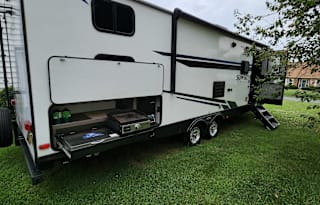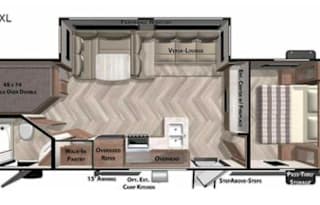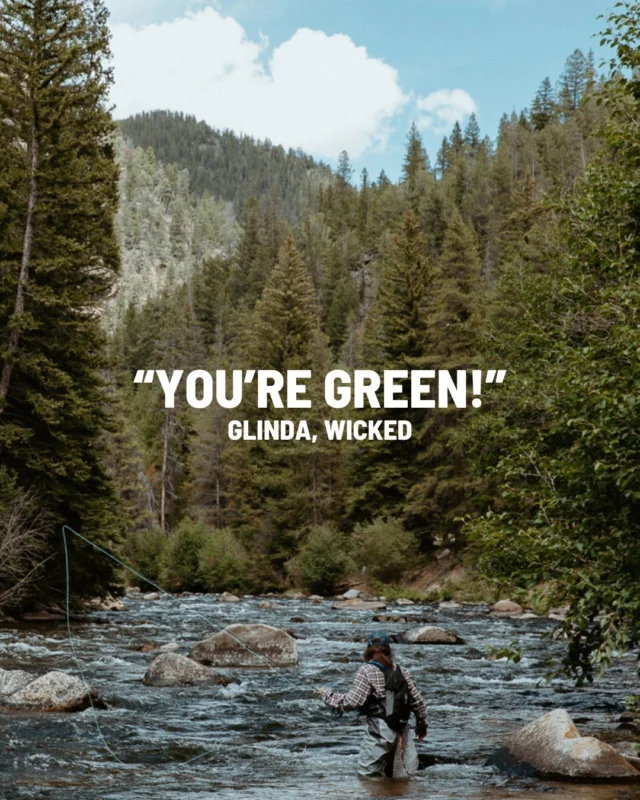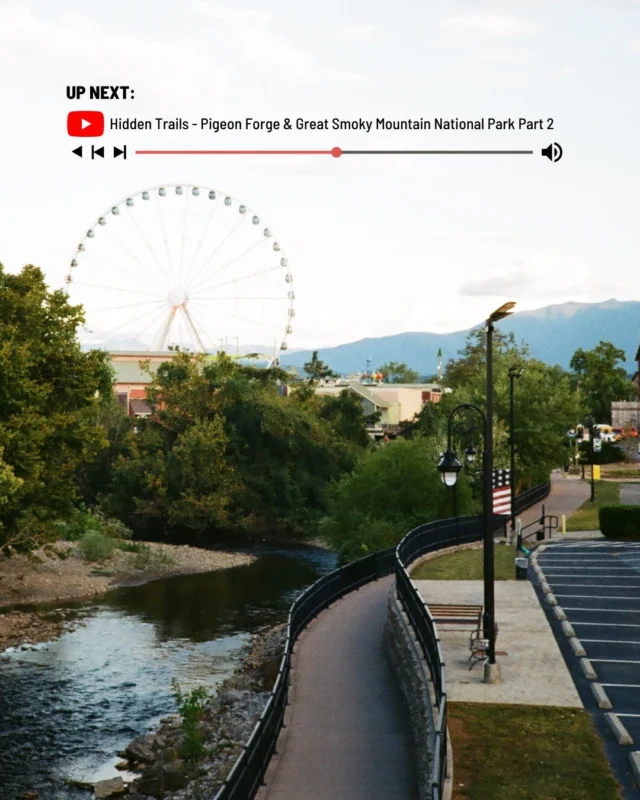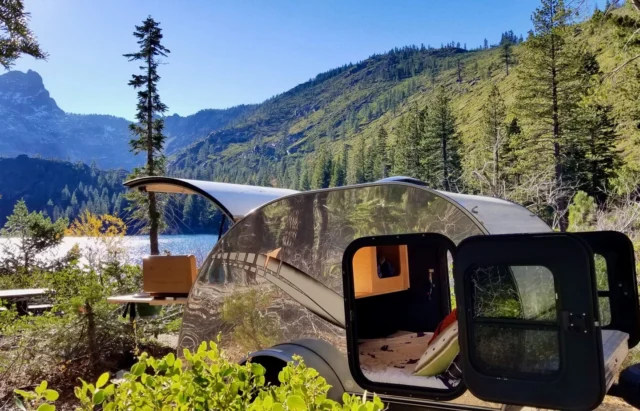
National forests are a wonderful place to get away for some peaceful camping. They’re full of outdoor activities, usually featuring excellent hiking trails, beautiful scenic drives, and fishing and swimming in lakes or streams. National forests can also be a great alternative to more crowded national parks. In fact, you can often find national forests near popular parks, and you’ll get the same activities and views with fewer expenses or people.
Here are 10 national forests around the country that are definitely worth visiting for a camping trip!
Shasta Trinity National Forest
The Shasta-Trinity National Forest in Northern California is the state’s largest national forest. It’s a beautiful combination of snow-capped mountains, including the 14,162-foot Mount Shasta, sparkling lakes like Shasta Lake and Lake Siskiyou, and backcountry wilderness. The 2.1 million acres of forest landscape encompass a variety of ecosystems and range in elevation from 1,000 to 14,162 feet.
Why It’s Bucket List Worthy
The forest has some of California’s most striking scenery, and it’s all in a much less-crowded area than the state’s popular national parks. Shasta-Trinity National Forest is a wonderful place to escape the summer heat that plagues much of California, and you can hike, swim, fish, and do all sorts of outdoor activities in the cool mountain environment. You’ll also find lovely fall foliage, and fun winter sports. Here are a few of the best things to do in the Shasta-Trinity National Forest.
Best Hikes
There are lots of excellent hikes in the area for every ability. Here are some to try:
- Ney Springs and Faery Falls – This hike is 1.4 miles and just 255 feet of elevation gain, making it a relatively easy out-and-back hike. Dogs are allowed, and are even allowed off-leash in some areas. You may need four-wheel drive, or at least a high-clearance vehicle to get to the starting point. You can enjoy walking alongside a creek, and you’ll find some pretty waterfalls as well.
- Lake Siskiyou Trail – This 7-mile loop trail is an easy one, without much elevation gain. You can walk the entire loop, or just do a portion and turn around. The area is popular for fishing, birding, and dog walking. It follows the lake, so there are lots of beautiful views as well.
- Heart Lake Trail From Castle Lake – This trail is considered a moderately challenging route that is long and includes 813 feet of elevation gain. You can get great photos of Heart Lake, and there are nice views of Mount Shasta from lookout points above the lake. This is a popular spot for hiking in summer and snowshoeing and cross-country skiing in winter.
- Mount Shasta via Clear Creek Route – This trail to the top of Mount Shasta is strenuous, and should only be attempted by experienced climbers. The trail is 11.5 miles long and includes 7,634 feet of elevation gain – a very steep route. The best time to hike it is from June through September, but check weather reports.
Along with hiking, you can swim, fish, and boat in the lakes. In winter, you can go cross-country skiing, snowshoeing, and snowmobiling. Watch for wild animals including black bears, mountain lions, bobcats, elk, and deer, and go birdwatching for bald eagles, ospreys, peregrine falcons, and owls.
You can also take scenic drives through the forest. The Redwood Highway is a 75-mile drive from Grants Pass, Oregon to Crescent City, California and goes through the northern edge of the forest. You’ll drive past Smith River, and through towering redwood forests.
Planning Your Trip to Shasta Trinity National Forest
Here are a few fast facts while planning your trip to Shasta-Trinity National Forest.
Location: Northern California – nearby towns include Redding, Mount Shasta, and Weaverville.
More Information: Shasta-Trinity National Forest; California National Forests
Top Campgrounds: There is plenty of free dispersed camping in the forest. Some of the most popular spots for it are off Castle Lake Road, at the Beehive Dispersed Area, and at North Trinity Lake. You can also find developed campgrounds near Redwood National Park or in southern Oregon near Klamath Falls.
Pisgah National Forest
Pisgah National Forest is mostly in the Appalachians in western North Carolina. The forest covers half a million acres and includes some of the Blue Ridge and Great Balsam Mountains. It’s also near the Great Smoky Mountains, so you’ll get lots of stunning mountain views from many places in the forest. Pisgah is less crowded than the nearby Great Smoky Mountains National Park, making it a great option for lots of outdoor recreation. The forest is also one of the oldest national forests in the eastern United States.
Why It’s Bucket List Worthy
Pisgah National Forest has more than 500 miles of trails. Some of the best hikes in the forest are:
You’ll also find beautiful waterfalls in the forest, including Looking Glass Falls, Catawba Falls, and Graveyard Fields. There’s lots of fishing, mountain biking, and rock climbing in the forest as well.
You can watch for wildlife in the area, and you might spot black bears, white-tailed deer, wild turkeys, and salamanders.
Finally, there are several scenic drives in the area that you may want to explore. Consider driving:
The drives and hikes in this area are especially picturesque in the fall, when you can see the leaves change across the mountains and valleys. In fact, this is one of the top leaf-peeping destinations in the country.
Planning Your Trip to Pisgah National Forest
Here are some quick facts as you plan your trip to the forest:
Location: Western North Carolina – Asheville, N.C. is nearby
More Information: Pisgah National Forest; North Carolina National Forests
Top Campgrounds: There is free dispersed camping in the forest. Some great spots for it are at Yellow Gap Road, the Blue Valley Area, and in the Linville Gorge Wilderness. If you want more amenities, there are lots of developed campgrounds near Asheville.
Sawtooth National Forest
Sawtooth National Forest spans more than 2.1 million acres in central Idaho and a small part of northern Utah. The forest gets its name from the Sawtooth Mountains, granite peaks that soar upward and make a striking landscape. You’ll find alpine lakes, wildflower-strewn meadows, and a solitude you won’t find in more popular national parks. You’ll also find tons of outdoor activities to enjoy year-round in this rugged national forest.
Why It’s Bucket List Worthy
The Sawtooth National Forest has more than 1,000 miles of hiking trails within the forest boundaries. You can try one of these excellent hikes while visiting:
There are also glacier-fed lakes like Sawtooth Lake and Redfish Lake where you can fish, swim, boat, and paddleboard. There are mountain biking trails like the Fisher Creek Loop. You can also watch for wildlife including moose, mountain goats, bears, and even wolves.
In the fall, take a scenic drive and see the aspens as they turn brilliant shades of yellow, especially near Smoky Mountains and Boulder Basin. During the winter, you can ski at Sun Valley, or snowshoe, cross-country ski, and snowmobile many trails through the forest.
Also, check out the views from the Sawtooth Scenic Byway – one of the more scenic drives in the Western states.

Planning Your Trip to Sawtooth National Forest
Here’s what to know as you plan your trip.
Location: Central Idaho and Northern Utah – Stanley, Ketchum, and Sun Valley, Idaho are nearby towns.
More Information: Sawtooth National Forest; Idaho National Forests
Top Campgrounds: There is free dispersed camping throughout the national forest. Some popular places for dispersed camping include Forest Road 146 and Lake Creek Road near Ketchum. Nip and Tuck Road and the Salmon River Corridor near Stanley are also good spots.
If you want more amenities, you can find developed campgrounds in Stanley and other areas of Idaho.
White Mountain National Forest
White Mountain National Forest spreads through northeastern New Hampshire and western Maine. You’ll find mountains, streams, and plenty of trees in this New England nature retreat. Whether you’re enjoying outdoor summer fun, leaf-peeping in fall, or enjoying winter activities, you’ll find something to do in this forest.
Why It’s Bucket List Worthy
White Mountain National Forest is a well-known spot for fall drives, and you’ll see a kaleidoscope of colors as the trees turn red, yellow, and orange. In summer, you can hike, fish, and splash in streams and waterfalls. Mount Washington, known for having some of the most extreme weather on earth, is a popular place to visit, and you can hike or drive to the top. During the winter, you can snowshoe, cross-country ski, and snowmobile in the forest.
Things to do in White Mountain National Forest
Here are a few of the many activities you can do in the forest:
- Hike Franconia Ridge Loop
- Drive the Kancamagus Highway (especially in autumn!)
- Take the cog railway to the top of Mount Washington
- Check out Crawford Notch State Park
- Snowshoe in Bretton Woods
- Picnic at Lower Falls on the Swift River
- Watch for moose at Pinkham Notch
- Hike Arethusa Falls Trail to one of the tallest waterfalls in New Hampshire
Planning Your Trip to White Mountain National Forest
Here’s what to know about the forest as you plan.
Location: Northeastern New Hampshire, Western Maine – North Conway is near Mount Washington and the Kancamagus Highway. Lincoln and Jackson, New Hampshire are both nearby towns with easy access to the forest.
More Information: White Mountain National Forest; New Hampshire National Forests
Top Campgrounds: There is free dispersed camping throughout the national forest. Some popular places for dispersed camping include the Carrigan Notch/Nancy Pond area, the Meader Ridge/Eagle Crag area, and Sawyer Pond.
If you want more amenities, you can find developed campgrounds along the Kancamagus Highway.
Bridger-Teton National Forest
Bridger-Teton National Forest is in western Wyoming. Its proximity to Yellowstone and Grand Teton National Parks makes it a great alternative to visiting the more crowded parks. The forest encompasses more than 3.4 million acres, making it one of the largest national forests in the country. You’ll find alpine lakes, craggy mountains, meadows, and canyons in this wild Western landscape.
Why It’s Bucket List Worthy
There are lots of summer outdoor activities in this forest, from hiking to fishing to boating and swimming. In the fall, watch for vivid yellow aspen trees, and in winter, enjoy cross-country skiing, snowshoeing, and snowmobiling. You can also look for wildlife in the park – grizzly bears, elk, wolves, moose, and mountain goats all live in the area.
Here are some of the best hikes, scenic drives, and other things to do in this national forest.
- Drive Greys River Road
- Hike to Green River Lakes
- Fish for trout in the Hoback River
- Take pictures at Lower Slide Lake
- Snowmobile at Togwotee Pass
- Watch for elk in the National Elk Refuge corridor

Planning Your Trip to Bridger-Teton National Forest
Here’s what to know about this area as you make your plans.
Location: Western Wyoming – Jackson, Wyoming is the gateway to the forest.
More Information: Bridger-Teton National Forest; Wyoming National Forests
Top Campgrounds: There is free dispersed camping throughout the national forest. Some popular places for dispersed camping include the Greys River Road area near Alpine, Upper Gros Ventre Road near Jackson, and Green River Lakes near Pinedale.
If you want more developed campgrounds, there are lots of campgrounds near Jackson where you can stay as well.
Coconino National Forest
Coconino National Forest is in northern Arizona and covers the area from Sedona to the mountains around Flagstaff. The national forest includes Ponderosa pines, volcanic lava fields, Native American ruins and sites, and sandstone canyons. Warm yourself in the red rock deserts during chilly months, or cool off in the pine forests during the summer.
Why It’s Bucket List Worthy
The forest has activities year-round. During the hotter months of summertime, you can hike, camp, and cool off in the mountains near Flagstaff. While it’s cooler, enjoy the Sedona rock formations or explore Ancestral Puebloan cliff dwellings.
Here are some of the best hikes, scenic drives, and other things to do when you’re in Coconino National Forest.
- Visit Oak Creek Canyon, which looks like a smaller cousin to the Grand Canyon
- Hike Cathedral Rock Trail in Sedona
- Summit Humphreys Peak
- Explore Lava River Cave
- Drive the Red Rock Scenic Byway
- Ski or sled at Arizona Snowbowl in Flagstaff
- Visit Walnut Canyon National Monument
- Go mountain biking on the Schultz Creek Trail
Along with these activities, keep an eye out for elk, deer, eagles, bears, mountain lions, and other wildlife in the forest.
Planning Your Trip to Coconino National Forest
Here’s what to know about this area as you make your plans.
Location: Northern Arizona – the towns of Sedona and Flagstaff are both close to the national forest
More Information: Coconino National Forest; Arizona National Forests
Top Campgrounds: There is free dispersed camping throughout the national forest. Some great options for dispersed camping include Loy Butte Road near Sedona, Schnebly Hill Road, and Lake Mary Road near Flagstaff. If you want campgrounds with more amenities, there are campgrounds in Sedona and campgrounds in Flagstaff where you can stay.
Sierra National Forest
The Sierra National Forest is along the western slopes of the Sierra Nevada mountains and covers more than 1.3 million diverse acres. The forest is bordered by Yosemite National Park to the north and Kings Canyon National Park to the south. It includes some of California’s most striking landscapes and plenty of outdoor activities to enjoy year-round.
Why It’s Bucket List Worthy
You can hike, swim, fish, boat, go horseback riding, mountain bike, and try a variety of other activities during the summer. The forest also covers higher elevations, so it’s a great place to cool off during the hotter months. In spring, you can find wildflowers blooming across many forest areas, and in fall the trees turn striking autumn colors.
Here are a few of the best hikes, scenic drives, fishing spots, and other things to do in the Sierra National Forest.
- Hike the Lewis Creek Trail
- Explore Nelder Grove – see ancient sequoias and visit historic logging cabins
- Hike Fresno Dome
- Drive the Sierra Vista Scenic Byway
- Go boating, fishing, and swimming at Bass Lake
- Hike to Angel Falls & Devil’s Slide
You can also watch for wildlife, including bears, deer, mountain lions, bobcats, falcons, eagles, and owls.
Planning Your Trip to Sierra National Forest
Here’s what to know about this area as you make your plans.
Location: Central California – the towns of Oakhurst, Clovis, and Fresno are nearby
More Information: Sierra National Forest; California National Forests
Top Campgrounds: There is free dispersed camping throughout the national forest. Some great options for dispersed camping include Bald Mountain, the Goat Meadow Snow Play Area, and the Kaiser Wilderness.
If you want more amenities, there are campgrounds in Yosemite, along with some in Fresno.
Ozark National Forest
Ozark National Forest is in northern Arkansas and covers more than 1.2 million acres. The forest has rugged mountains, deep valleys, and hardwood forest. You’ll find lots of outdoor activities to do year-round, including hiking, fishing, scenic drives, and more. The forest is known for its fall foliage, so it’s a beautiful spot to visit in October.
Why It’s Bucket List Worthy
There are tons of things to do in the Ozark National Forest. Here are a few of the many ways to enjoy the natural beauty and diverse landscapes of the forest.
- Explore Blanchard Springs Caverns
- Hike the Whitaker Point Trail
- Drive the Pig Trail Scenic Byway
- Hike the Pedestal Rocks Trail
- Visit the Sugarloaf Fire Tower Historic District
You can also watch for wildlife in the area, including bears, deer, bobcats, otters, eagles, wild turkeys, and more.
Planning Your Trip to Ozark National Forest
Here’s what to know about the area around Ozark National Forest as you plan your trip.
Location: Northern Arkansas – the towns of Jasper, Ozark, and Fayetteville are nearby
More Information: Ozark National Forest; Arkansas National Forests
Top Campgrounds: There is free dispersed camping throughout the national forest. Some popular options for dispersed camping include Sam’s Throne Recreation Area and Barkshed Recreation Area. If you want more amenities, check out campgrounds in Fayetteville.
Tongass National Forest
Tongass National Forest is the largest national forest in the United States and stretches across 17 million acres of rainforests, coastline, fjords, glaciers, and other wilderness. It covers the Alaska Panhandle, and people come to the area for hiking, kayaking, cross-country skiing, snowmobiling, and to witness the fall salmon spawning season.
Why It’s Bucket List Worthy
There are lots of outdoor activities available in this forest, and you’ll find plenty to do regardless of the season. Here are a few things to do in the national forest:
- Take a helicopter tour of Mendenhall Glacier
- Explore El Capitan Cave
- Hike Nugget Falls Trail
- Visit Misty Fjords National Monument
- Hike the Perseverance Lake Trail
- Take the Goldbelt Tram up Mount Roberts
- Relax in Tenakee Springs
You can also watch for wildlife, including brown and black bears, Sitka black-tailed deer, wolves, mountain goats, moose, humpback whales, eagles, and more.
Planning Your Trip to Tongass National Forest
Here’s what to know about the area around Tongass National Forest as you plan your trip.
Location: Southeastern Alaska – the towns of Juneau, Sitka, and Ketchikan are nearby
More Information: Tongass National Forest; Alaska National Forests
Top Campgrounds: There is free dispersed camping throughout the national forest. However, because of the limited roads in the area, many of these sites are only accessible by boat, floatplane, or on foot. Some popular areas for dispersed camping include Staney Bridge Campground, Upper Salamander Creek Recreation Site, and Lake #3 Campground.
If you want campgrounds with more amenities, check out campgrounds in Juneau.
Daniel Boone National Forest
Daniel Boone National Forest in Kentucky covers more than 700,000 acres of rugged terrain, sandstone cliffs, natural arches, and rich ecosystems. The forest is tucked into the Appalachian foothills, and provides lots of opportunities for outdoor activities.
Why It’s Bucket List Worthy
You can enjoy the natural beauty of this forest year-round. In summer, go hiking, fishing, swimming, and boating. During the fall, the forest puts on a show of vibrant autumn foliage. Winter lends itself to snowy hikes where you can enjoy the pristine wilderness.
Here are a few of the many activities you can enjoy in this national forest.
- Hike all or part of the 322-mile Sheltowee Trace Trail
- Visit Gray’s Arch Loop
- Hike Sky Bridge Trail
- Explore Natural Bridge State Resort Park
- Visit Pilot Knob and see where Daniel Boone is believed to have first viewed the Bluegrass region
- Look for moonbows at Cumberland Falls
- Take in views from Chimney Top Rock
- Go rock climbing at Red River Gorge
You can also watch for wildlife in this forest, including black bears, deer, coyotes, river otters, bats, wild turkeys, owls, and more.
Planning Your Trip to Daniel Boone National Forest
Here’s what to know about the area around Daniel Boone National Forest to help you plan your trip.
Location: Eastern Kentucky – the towns of Morehead, Stanton, and Winchester are nearby
More Information: Daniel Boone National Forest; Kentucky National Forests
Top Campgrounds: There is free dispersed camping throughout the national forest. Some great places for dispersed camping in the forest include the Paragon Dispersed Camping Area, the Indian Creek Area, and the Swain Ridge Road Dispersed Camping Area. If you want more developed campgrounds, try campgrounds in Lexington, Kentucky.
Camping in national forests is a wonderful way to escape the crowds you might find at national parks and other more popular areas. When you’re camping, remember the Leave No Trave principles so the forest stays as natural as it was when you found it.
- Plan ahead and prepare
- Travel and camp on durable surfaces
- Dispose of waste properly
- Leave what you find
- Minimize campfire impacts
- Respect wildlife
- Be considerate of other visitors
If this is the first time you’re dry camping, or boondocking, be sure to check out our expert guide to boondocking for tips and advice. And if you don’t have an RV of your own, RVshare has lots of rental options available, including many that are well-suited to boondocking and rugged camping.

